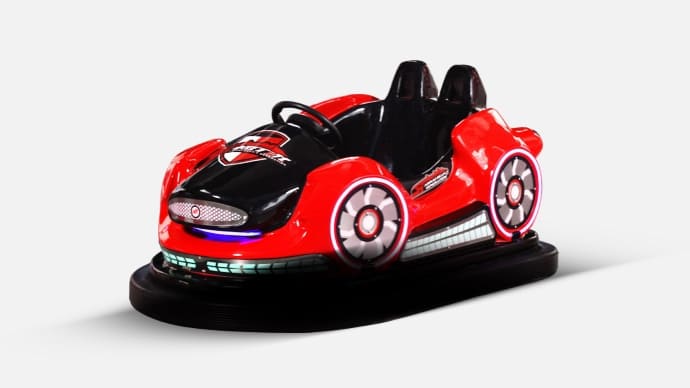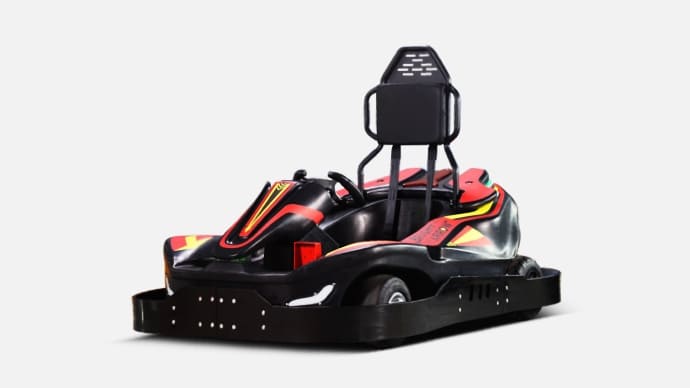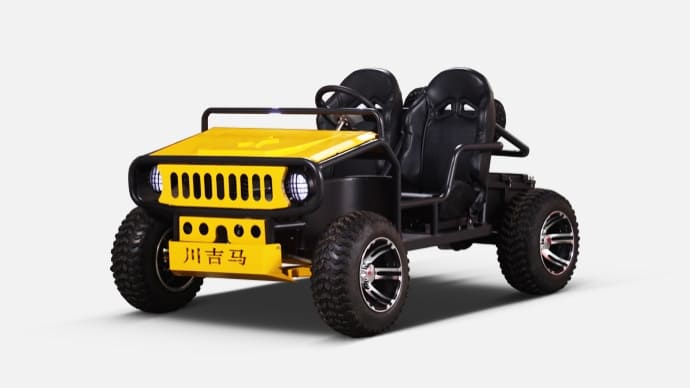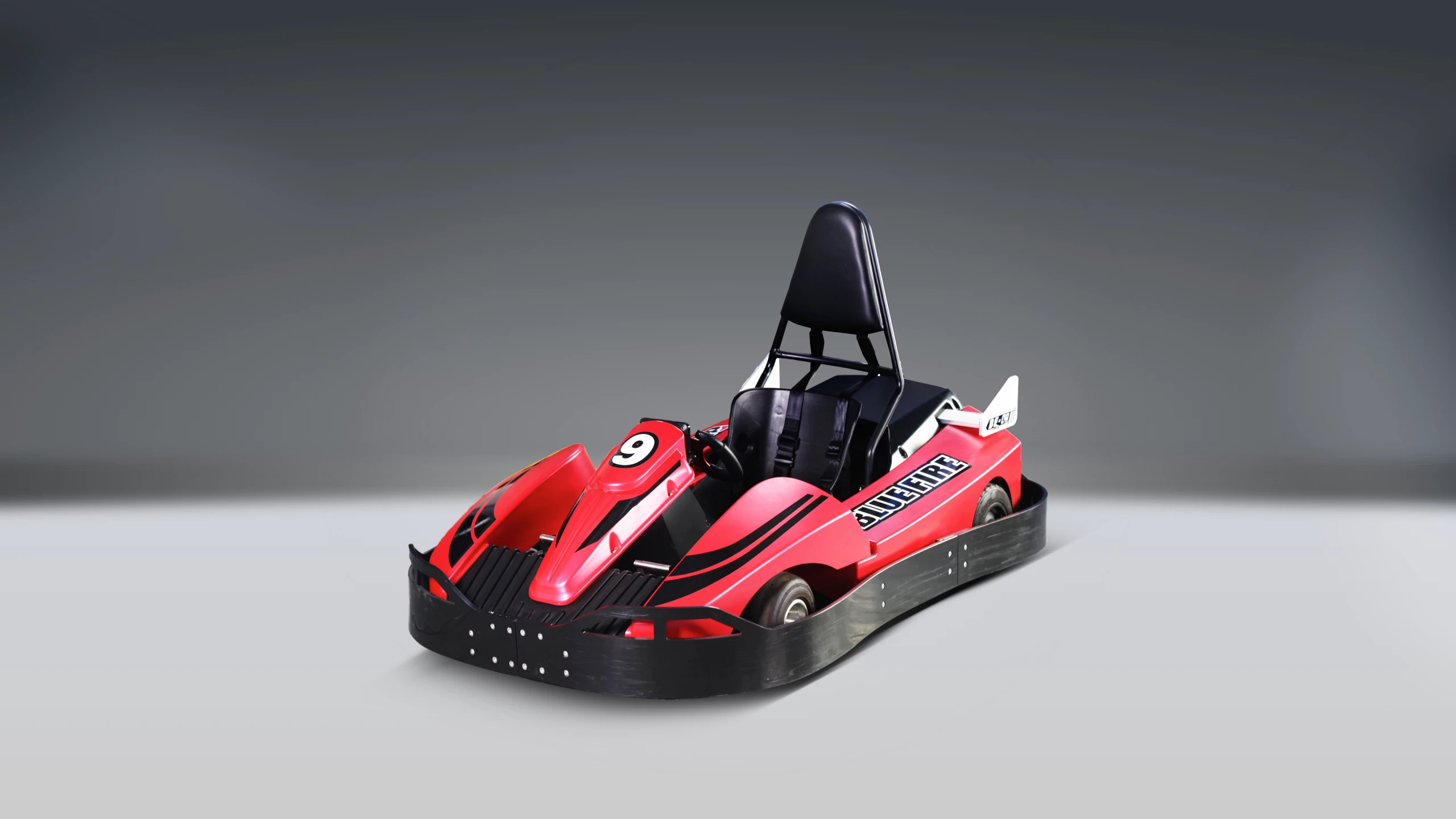Electric Go Karts Buying Guide: What to Look For
- Electric Go Karts Buying Guide: What to Look For
- Why choose Electric Go Karts?
- About ANCHI Amusement — Trusted Manufacturer
- Key Buying Considerations: Use Case and Rider Profile
- Motor Types and Power
- Battery Types, Range, and Charging
- Speed, Acceleration, and Controls
- Safety Features and Standards
- Durability, Materials, and Build Quality
- Maintenance Needs and Lifecycle Costs
- Operational Considerations for Venues
- Warranty, Support, and After-sales Service
- Environmental Impact and Noise
- Cost Comparison: Typical Features
- Choosing the Right Manufacturer
- Final Checklist Before Purchase
- FAQ — Frequently Asked Questions
- What is the typical lifespan of an electric kart battery?
- How fast can electric go karts go and can speeds be limited?
- Are electric karts more expensive to maintain than petrol karts?
- Can I retrofit batteries or upgrade motors later?
- How should I plan charging for a busy track?
- Where can I learn more or request a quote?
Electric Go Karts Buying Guide: What to Look For
Why choose Electric Go Karts?
Electric Go Karts are increasingly preferred by commercial venues and private owners because they deliver instant torque, lower operational costs, quieter operation, and easier maintenance compared with petrol karts. For family entertainment centers, malls, and outdoor tracks, electric units reduce emissions on-site and provide a cleaner guest experience. When evaluating Electric Go Karts, focus on performance, reliability, safety, and total cost of ownership.
About ANCHI Amusement — Trusted Manufacturer
ANCHI Amusement is one of the leading manufacturers of amusement equipment in China, offering a full range of electric amusement vehicles including Electric Go Karts. With over 5,000 square meters of production space, multiple assembly lines, and a team of 30+ skilled technicians, ANCHI provides custom manufacturing, venue design, production, sales, and after-sales service. Their product range covers adult karts, youth karts, children’s karts, and related amusement vehicles, plus turnkey venue design services from concept to execution. Visit https://www.anchiamusement.com/ for product details.
Key Buying Considerations: Use Case and Rider Profile
Start by defining your primary use: commercial rental track, family entertainment center, amusement park, or private use. Commercial operators need durable frames, fast battery swapping or charging, and serviceable components. Private buyers may prioritize cost, compact size, and ease of storage. Also consider rider categories: children, youth, and adults have different speed, size, and weight requirements — ensure the kart matches intended riders for safety and satisfaction.
Motor Types and Power
Electric Go Karts use brushless DC (BLDC) or permanent-magnet synchronous motors (PMSM). BLDC motors are common for their efficiency, low maintenance, and good torque. Power is typically rated in kilowatts (kW): children’s karts often use 0.5–2 kW motors; youth and rental karts usually use 2–6 kW; high-performance adult karts can range 8–15 kW. Choose motor power to match track layout and target speeds — more power gives faster acceleration and higher top speed but may increase energy draw and require sturdier chassis components.
Battery Types, Range, and Charging
Common battery types include lead-acid, lithium-ion, and LiFePO4. Lead-acid is inexpensive but heavier and has a shorter cycle life. Lithium-ion and LiFePO4 offer higher energy density, faster charging, and longer lifecycles—LiFePO4 is preferred commercially for safety and longevity. Typical commercial rental karts run 1–4 hours per charge depending on usage intensity; track operators often use battery swapping or have fast chargers. Charging times vary: 2–8 hours depending on battery chemistry and charger type. When buying, confirm the battery’s cycle life (e.g., 800–2000 cycles for LiFePO4) and the availability and cost of replacement packs.
Speed, Acceleration, and Controls
Decide on desired top speeds based on rider groups: kids’ karts are usually limited to under 20 km/h, youth karts between 20–40 km/h, and adult rental karts often operate between 40–60 km/h on commercial tracks; high-performance models can exceed 80 km/h. Speed controllers should offer smooth throttle response and programmable speed limiters for different rider categories. Remote cut-off systems and real-time monitoring are useful features for commercial operations to enforce speed rules and respond to incidents quickly.
Safety Features and Standards
Safety is paramount. Look for sturdy chassis with side pods, reinforced bumpers, reliable braking systems (hydraulic or mechanical disc brakes), adjustable seat belts or harnesses, and anti-roll features where appropriate. Commercial karts should support centralized shutdown and have optional telemetry for remote monitoring. Confirm compliance with regional safety standards and certifications relevant to amusement rides and electric vehicles. Also ensure appropriate protective equipment, clear rider briefings, and track safety protocols.
Durability, Materials, and Build Quality
Inspect frame materials (steel tubing with corrosion-resistant coatings is common), welding quality, and protection of electrical components from water and dust (IP ratings where applicable). Durable drive components (axles, sprockets, chains or direct-drive systems) and replaceable wear parts (bumpers, tires, brakes) reduce downtime. For commercial use, prioritize models designed for continuous operation with accessible service points and modular components for quick repairs.
Maintenance Needs and Lifecycle Costs
Electric karts reduce fuel and oil costs but still need routine maintenance: battery health checks, motor controller diagnostics, brake inspection, tire wear, and chassis checks. Budget for battery replacement (after typical lifecycle of 800–2,000 cycles depending on chemistry), brake pads, tires, and consumables. Ask manufacturers for recommended maintenance schedules and expected mean time between failures (MTBF) for key components. Knowing total cost of ownership over 3–5 years helps make the best buying decision.
Operational Considerations for Venues
For commercial sites consider charging infrastructure, spare-kart inventory, charging capacity, and space for battery swapping and storage. Some operators prefer multiple batteries per kart and fast-swapping workflows to maximize uptime. Track layout and pit design influence the kart’s gearing and top speed selection. Also plan for training staff on charging safety, battery handling, and remote shutdown procedures.
Warranty, Support, and After-sales Service
Choose manufacturers who provide clear warranties on batteries, motors, and electronic controllers, and offer spare parts availability and technical support. ANCHI Amusement, for example, integrates design, production, and after-sales service, which can simplify sourcing replacements and obtaining technical assistance. For international buyers, confirm shipping and spare parts logistics to minimize downtime.
Environmental Impact and Noise
Electric Go Karts produce no local exhaust emissions and are significantly quieter than petrol karts, creating a more pleasant environment for guests and neighbors. Consider battery recycling programs and end-of-life management when selecting vendors. Quieter operation allows indoor and mixed-use venues to run longer hours with fewer noise complaints.
Cost Comparison: Typical Features
Below is a concise comparison of common Electric Go Kart configurations to help match needs with budgets and operations.
| Feature | Children’s Kart | Youth/Family Kart | Commercial Adult Kart |
|---|---|---|---|
| Motor Power | 0.5–2 kW | 2–6 kW | 6–15 kW |
| Top Speed | <20 km/h | 20–40 km/h | 40–80+ km/h |
| Battery Type | Lithium/LiFePO4 | LiFePO4 / Lithium-ion | LiFePO4 preferred |
| Run Time per Charge | 1–3 hours | 1–4 hours | 1–4 hours (swap systems common) |
| Typical Use | Indoor play centers | Family entertainment centers | Commercial rental tracks |
Choosing the Right Manufacturer
Work with manufacturers who demonstrate experience in both product engineering and venue solutions. ANCHI Amusement is an example of a vertically integrated provider that offers custom go-kart manufacturing and comprehensive venue design services—helpful for operators needing turnkey solutions. Key vendor selection criteria: proven track record, transparent technical specs, clear warranty terms, spare parts availability, and responsive after-sales support.
Final Checklist Before Purchase
Before finalizing a purchase, confirm: intended rider groups and speeds; battery chemistry and expected lifecycle; charging or swapping workflow; safety features and certifications; warranty coverage and spare parts lead times; and references from other operators. Request a demo or trial where possible, and ask for a maintenance plan tailored to your projected usage.
FAQ — Frequently Asked Questions
What is the typical lifespan of an electric kart battery?
Battery lifespan depends on chemistry and usage. LiFePO4 batteries commonly last 800–2,000 full charge cycles if maintained correctly. Practical lifespan in commercial service varies by depth of discharge, charging practices, and temperature control.
How fast can electric go karts go and can speeds be limited?
Top speeds vary widely: children’s karts typically under 20 km/h, youth karts 20–40 km/h, and commercial adult karts 40–60+ km/h. Most electric karts allow programmable speed limiters or throttle maps so operators can cap speeds for safety or different rider categories.
Are electric karts more expensive to maintain than petrol karts?
Electric karts often have lower day-to-day maintenance costs because they lack fuel systems, clutches, and complex engines. However, battery replacements and charging infrastructure are significant considerations. Overall total cost of ownership can be lower for electric karts, especially in high-use commercial environments.
Can I retrofit batteries or upgrade motors later?
Some karts are modular and support battery or motor upgrades; others are not. Confirm upgrade paths and compatibility with manufacturers before purchase. Choosing a vendor with modular designs and available spare parts simplifies future upgrades.
How should I plan charging for a busy track?
Options include multiple battery packs per kart with fast-swapping workflows, dedicated fast chargers, or staggered charging schedules. Plan charging capacity based on peak sessions and include space for safe battery handling and storage. Professional venue designers (like ANCHI) can help optimize workflow for minimal downtime.
Where can I learn more or request a quote?
Contact reputable manufacturers that offer product specifications, references, and onsite support. ANCHI Amusement provides custom manufacturing and full venue design services; visit https://www.anchiamusement.com/ for product lines, case studies, and contact details.
Best professional eldorado bumper cars manufacturers and supplier brands
Top electric go kart for kids Manufacturers and suppliers in China
Leading Professional Go Karts Manufacturer – ANCHI
OEM/ODM electric go kart charger Manufacturers and supplier in China
About Cooperation Process
What steps does the collaboration process include?
The cooperation process mainly includes demand communication, sample confirmation, contract signing, production and production, quality inspection, logistics and distribution, etc.
What support can I get during the cooperation?
During the cooperation period, we will provide you with professional technical support, marketing suggestions and timely after-sales service.
About Logistics
Is your logistics and distribution service reliable?
Yes, we cooperate with a number of well-known logistics companies to ensure the timeliness and reliability of logistics and distribution services and provide you with a satisfactory distribution experience.
About Customized Service
Can I order customized services?
Yes, you can book customized services through our official website or contact information, and our sales team will serve you wholeheartedly.
After Sales Support
How to contact your after-sales customer service team?
You can contact our after-sales customer service team through the contact information provided by our sales manager, and we will provide you with timely help and support.

Bright Arrow Electric Go Karts
2024 new model with two powerful hub motors; each motor is 1000 watts with shock absorbers. It has fast-charging iron phosphate lithium that can be cycled 2000 times. It has three speeds. Remote control for starting, checking accounts, and setting volume. LCD dispay for showing speed, battery power, and game time.

Blue Fire Electric Go Karts
Experience the thrill of speed with ANCHI's Blue Fire Electric Go Karts, perfect for both adults and kids. These high-performance electric go karts deliver unparalleled excitement while ensuring safety and reliability. Ideal for family fun or competitive racing, our electric go karts blend innovation with cutting-edge technology. Explore the future of racing with ANCHI, where performance meets sustainability. Discover more today and rev up your passion for adventure with our premium electric go karts.

Cyclone RS 2025 1200W Electric Go-kart for Home Entertainment Centers
The Cyclone RS 2025 is a high-performance electric ride-on car designed for thrill-seekers, entertainment centers, and commercial amusement businesses. Built with a durable ABS body and reinforced metal chassis, it combines strength, safety, and speed for a superior driving experience. With a 1200W mid-mounted motor (peaking at 3600W), advanced control system, and long-lasting 72V20AH LiFePO₄ battery, this ride ensures both powerful performance and reliability.
Whether for amusement parks, game zones, rental businesses, or personal recreational use, the Cyclone RS 2025 delivers unmatched excitement and durability.
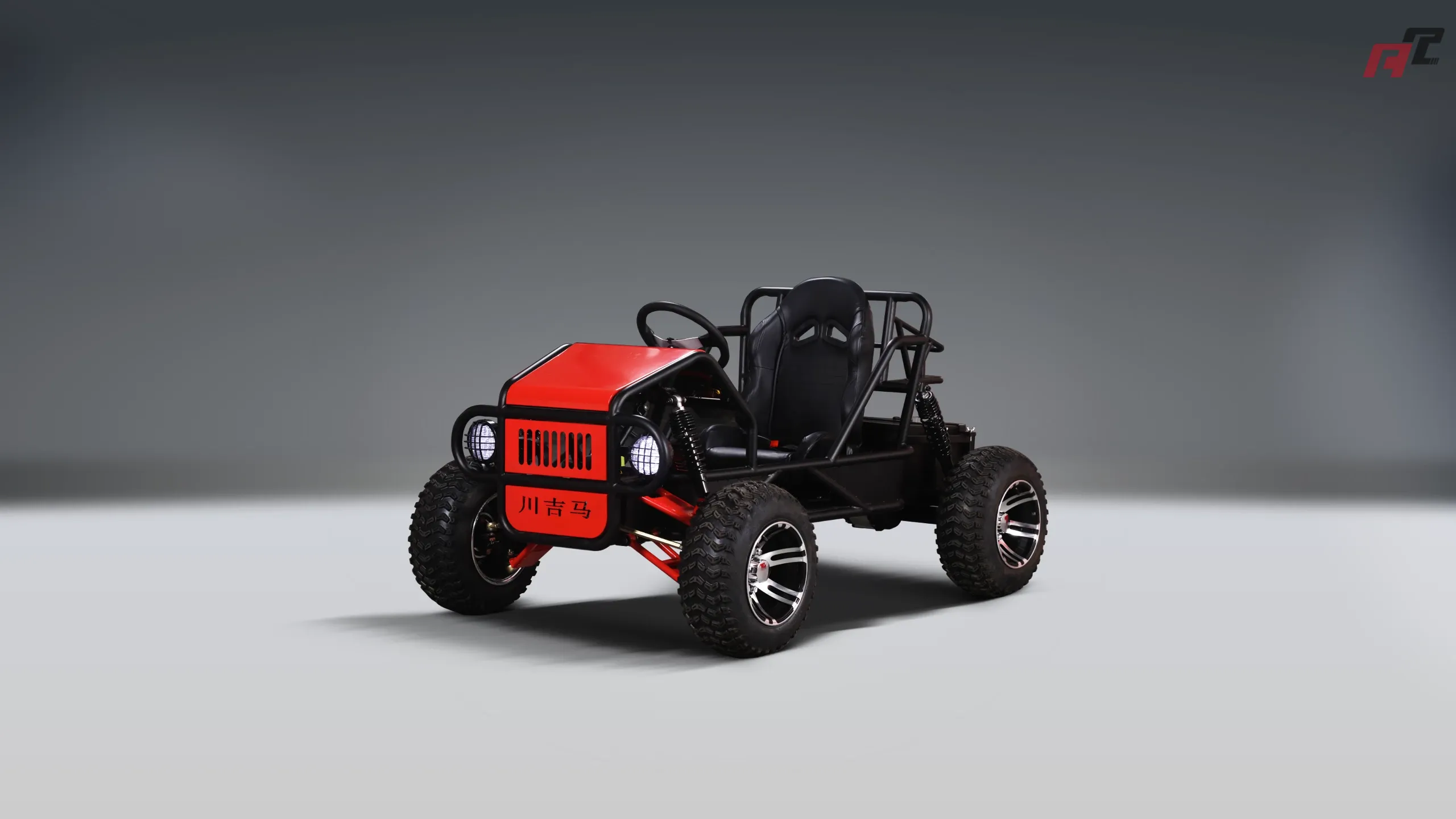
Kids Electric Off Roads One-seater ATV
Discover adventure with the ANCHI Kids Electric One-seater ATV, the perfect electric off-road experience for young explorers. Designed for safety and performance, this electric off-road go kart for kids offers unmatched thrills on any terrain. Its durable build and easy-to-use controls ensure a fun and safe ride. Ideal for budding adventurers, this ATV promises endless excitement. Explore the world with confidence with ANCHI’s innovative electric off-road solutions for kids.


